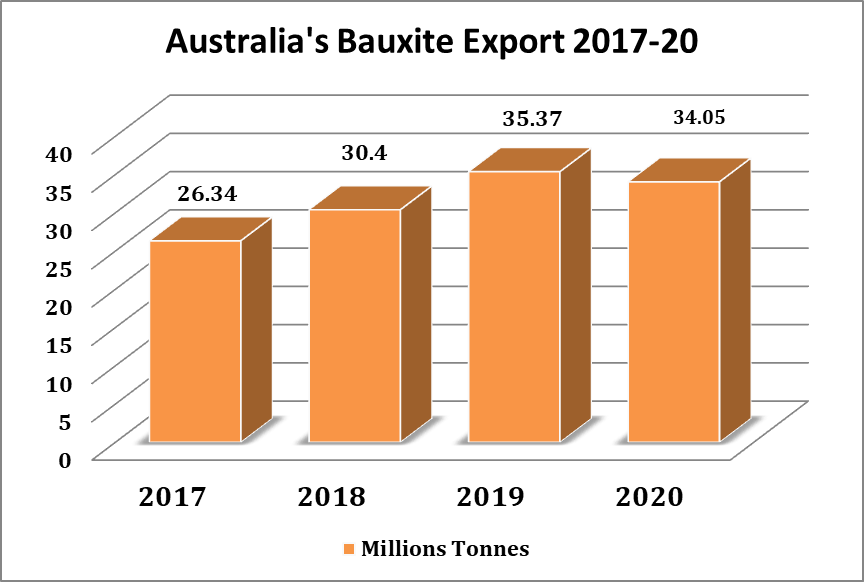

There are currently five bauxite mines in Australia providing feedstock for the seven alumina refineries, which in turn supply alumina to the six Australian aluminium smelters and the export market.
Demand for bauxite is growing at a faster rate than the growth in global industrial production. In the emerging economies of Asia and India, bauxite demand is particularly strong.
{alcircleadd}Australia’s bauxite export has been showing a steady market from 2017-20. The total volume of bauxite export was recorded at 126.16 million tonnes approximately.

In 2017 Australia’s bauxite export volume was spotted at 26.34 million tonnes, whereas in 2018 the bauxite export accounted to 30.40 million tonnes in volume, a growth by 15.41%, with an excess volume of 4.06 million tonnes exported from the previous year.
The year 2019 has reflected the bauxite export of 35.37 million tonnes, showing a growth rate by 16.34% from its previous year, with excess volume exported 4.97 million tonnes.
The bauxite export market of Australia is estimated a bit slow down in 2020, as the volume of export is forecasted at 34.05 million tonnes, a downfall of 3.73% and 1.32 million tonnes in volume from the preceding year.
The decline of bauxite export is not considered as a major factor, as the country wants to fulfil the demand of its aluminium industries.
Australia’s aluminium industry is a large integrated industry of mining, refining, smelting and semi-fabrication, which is of major economic importance nationally and globally.
The industry is geared to serve world demand for alumina and aluminium with more than 80% of production being exported.
Responses








